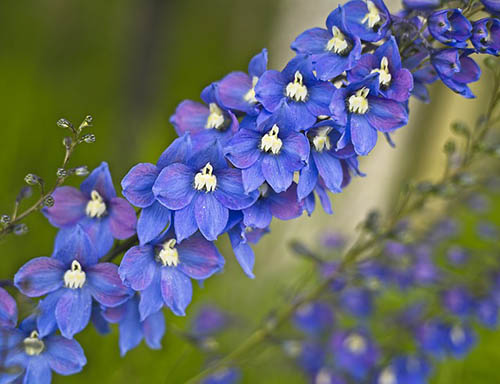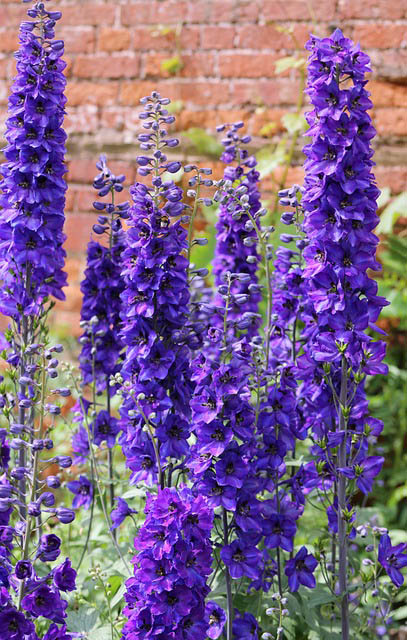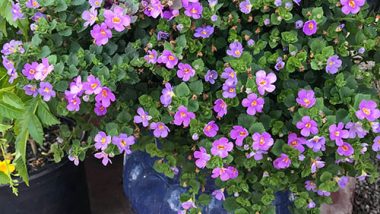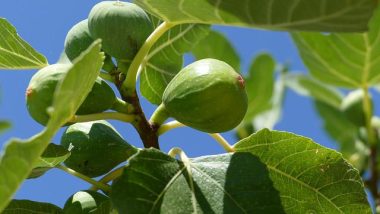Last updated on March 20th, 2025 at 11:18 am
The Delphinium plant is also called the Larkspur and Buttercup plant. According to wikipedia this plant has over 300 species and is toxic to livestock and people. But the color and long-lasting flowers are eye-catching. They come in numerous colors from bright blue to light pink and they will bloom in early spring and are used for heights in most gardens. Most flower shops use them as cut flowers in vases.
How to Care for Delphiniums
These plants love cool summer weather which makes it harder to grow in the Southwest where summers are hot. However, you can make them grow and look great by following some of the tips below.
How to care for these tall colorful plants in your garden. The best time to plant them is in early spring either by seeds or from nursery-bought plants.
Where to place the Delphinium plant
In the southwest, it is best to plant them in the morning sun and afternoon shade. Underneath a large shade tree will help them during the summer seasons. They will do well in containers and will look better if moved to a shady spot once early summer comes around. They like alkaline soil so do not add acidic fertilizer to your soil.
You will need to water almost daily during the summer months. Always use good loamy soil when planting Delphiniums and make sure the soil has good drainage. From my experience, Delphiniums like to be fed regularly. Once a month a good all-purpose fertilizer should help it bloom and grow during the early spring seasons.
The plant flower will spike out at about 12″ tall sometimes taller if conditions are right. It is best to stake the plant to keep it from breaking during windy days.

Problems with Delphiniums
The one big problems with these showy flowers is slugs and snails. These will suck on the foliage and shred it to pieces. Use Sluggo to kill these garden pests. Sluggo is 100% safe to use around plants and vegetable gardens.
Another problem is a fungus called powdery mildew. It is a fungi spore usually caused by too much water and shade on your plants. Avoid overhead watering and as mentioned before be sure your soil drains well. Try using Neem oil to remove this fungus. Neem oil is an organic insecticide and fungicide.
Learn more about Insects and diseases on plants.


Greenhouse Manager, Master Gardener, and Webmaster.
If you have any questions or enjoyed this post, feel free to share your thoughts in the comments below.


